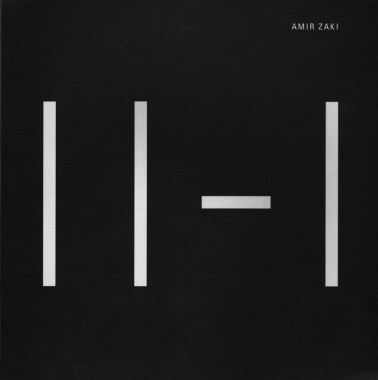
Amir Zaki, Eleven Minus One
Softcover, 122 pp., offset 4/4, 9 x 9 inches [26 x 36 inches unfolded]
Edition of 500
ISBN 978-0-26172-2-9
Published by LAXART
$75.00 ·
For this project,
Amir Zaki carefully reconstructed and reinterpreted, in virtual 3D space, several photographs from a series made in the mid-1980’s by Swiss artist duo Peter Fischli and David Weiss. Their photographs depict precariously balancing temporary sculptures that they intentionally constructed in a slap-dash manner. Their photographs of these sculptures were casually shot in their studio using unprofessional lighting and equipment. Through these photographs of temporary sculptural constructs made of household detritus, Fischli and Weiss subvert the idea of sculpture as a heroic manifestation of a unique and masterfully constructed object. Their work privileges the document over the sculpture, which Zaki interprets as an ironic inverse of the ubiquitous professional photographic documentation of the ‘serious’ sculpture found in so many art books and journals. In Zaki’s adaptation of their work, there is a re-inversion at play as he privileges the sculpture again, but only as a 3D virtual non-object in order to destabilize their relationship. This has manifested as a series of short photorealistic animation loops and a foldout book based on the eleven different ways that a cube can be unfolded. Working with this methodology allowed Zaki to further interrogate the conventions and limitations of photography by exploring depictions of ‘real’ space, but without the restraints of actual physics or forces such as gravity. Zaki is interested in the perversion of using Fischli and Weiss photographs of quickly made, throw-away sculptures as a source to create an incredibly laborious photorealistic virtual 3D scene that can be explored from all angles, both through photographic and orthographic projections. In this project Zaki has also fetishized the sculptures by making them virtual, stylized and idealized. He has resurrected these sculptures and placed them in a world where they need not ever ‘fall’ (fail). In the animations Zaki has created, the sculptures simply spin, teeter or gyrate indefinitely. In the photographs Zaki has rendered for the book, the sculptures hover in a perfect orthographic projection space, surrounded by a black void.
The book is a complex foldout design that is quite difficult to describe in text. It is ten double-sided square pages. Each page spread unfolds into unique configurations of six squares that represent all sides of a cube. The images on each unfolded page spread depict 3D digital recreations of photographs from the series Equilibres by Swiss artist duo Peter Fischli and David Weiss. When fully unfolded, the book opens up to approximately 27 x 36 inches. It is an interactive object, and can be folded and unfolded in multiple ways, creating grids, cubes, and unfolded boxes, each creating a unique experience and juxtaposition of images. It is important to recognize the book in terms of a limited edition or a multiple. It is also more of an object with sculptural qualities and a tactile nature than a ‘book’ in the traditional sense.
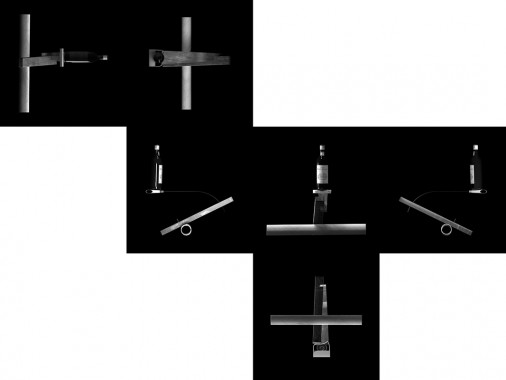


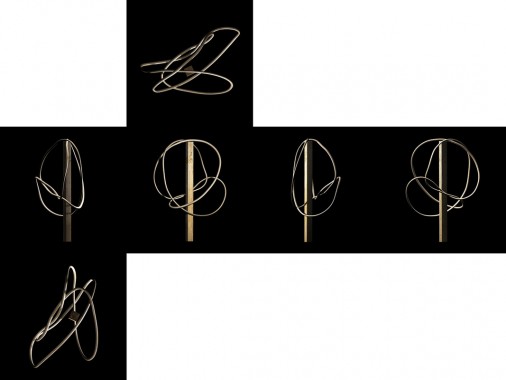
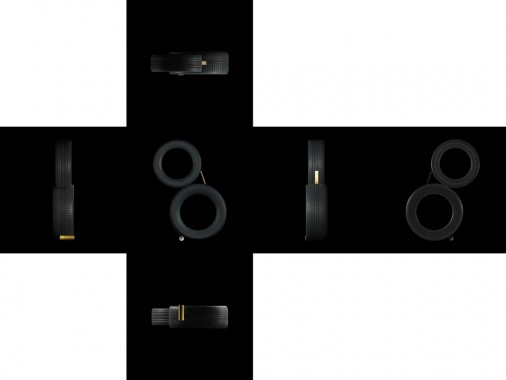
Amir Zaki, Art, David Weiss, Distribution, Eighth Veil, Greenblatt-Wexler, LAXART, Peter Fischli, Photography, Sculpture
Phil Chang
Arthur Ou
Eduardo Sarabia
Anna Sew Hoy
Temporary bookshop and exhibition
July 21 — August 25, 2011
Reception: Thursday, July 21, 6-8pm
Organized by Textfield, Inc.
Creatures of Comfort New York is pleased to present
No More Reality, a temporary bookshop and exhibition organized by Textfield, Inc. The bookshop and exhibition will take place in Creatures of Comfort’s adjacent project space at
205 Mulberry St.
In conjunction with the bookshop, which will feature current and archived titles from Textfield Distribution, there will be an exhibition of work by artists that Jonathan Maghen has collaborated with through Textfield to realize various publishing projects. The exhibition will feature the works of Phil Chang, Arthur Ou, Eduardo Sarabia, and Anna Sew Hoy.
The bookshop and exhibition title have been appropriated from the Philippe Parreno work, No More Reality (the demonstration), 1991, which is a four-minute video of children demonstrating, and chanting the slogan and title (“No More Reality”).
New York Times Tmagazine.
Aki Books, Amir Zaki, Anna Sew Hoy, ART2102, Arthur Ou, Ava Kaufman, Boabooks, C Magazine, Carvalho Bernau, Charlie White, Cheap Art America, Christoph Keller, Condiment, Cornerkiosk Press, Creatures of Comfort, der:die:das:, Distribution, Eduardo Sarabia, Ein Magazin über Orte, Exhibitions, Fellows of Contemporary Art, Fillip, FOCA, FormContent, Four Over One, IFS Ltd., Jade Lai, Jonathan Maghen, Karl Haendel, Keith Bormuth, Kunstverein, LACMA, Laura Bartlett Gallery, Laura Palmer Foundation, Manuel Raeder, Midway Contemporary Art, Mono.Kultur, New York, Nieves, Occasional Papers, OK-RM, Oslo Editions, Paper Monument, Participant Inc, Passenger Books, Phil Chang, Philippe Parreno, Project Projects, Rainoff Books, Regency Arts Press, Schnauzer, Shane Campbell Gallery, Slavs and Tatars, Teknisk Industri AS, Textfield, The Kingsboro Press, Tramnesia, VCFA, Vermont College of Fine Arts, Vier5

Alex Klein, Words Without Pictures
Softcover, 510 pp., offset 1/1, 5.75 x 8.25 inches
Edition of 2000
ISBN 978-1-5971114-2-3
Published by Aperture/LACMA
$25.00 ·
Words Without Pictures was originally conceived by curator Charlotte Cotton and artist Alex Klein as a means of creating spaces for discourse around current issues in photography. Every month for a year, beginning in November 2007, an artist, educator, critic or curator was invited to contribute a short unillustrated essay about an aspect of emerging photography. Each piece was available on the Words Without Pictures
website for one month and was accompanied by a discussion forum focused on its specific topic. Over the course of its month-long “life,” each essay received both invited and unsolicited responses from a wide range of interested parties. All of these essays, responses and other provocations are gathered together here. Previously issued as a print-on-demand title, we are pleased to present
Words Without Pictures to the trade for the first time as part of the
Aperture Ideas series.
A. L. Steiner, Alex Klein, Alex Slade, Allan McCollum, Allen Ruppersberg, Amir Zaki, Amy Adler, Anthony Pearson, Aperture, Art, Arthur Ou, Carter Mull, Charlie White, Charlotte Cotton, Christopher Bedford, Criticism, DAP, Darius Himes, David Reinfurt, Dexter Sinister, George Baker, Harrell Fletcher, James Welling, Jason Evans, John Divola, Kevin Moore, LACMA, Leslie Hewitt, Marisa Olson, Mark Wyse, Michael Queenland, Miranda Lichtenstein, Paul Graham, Penelope Umbrico, Photography, Sarah Charlesworth, Shannon Ebner, Sharon Lockhart, Soo Kim, Sze Tsung Leong, Theory, Walead Beshty, Wallis Annenberg Photography Department
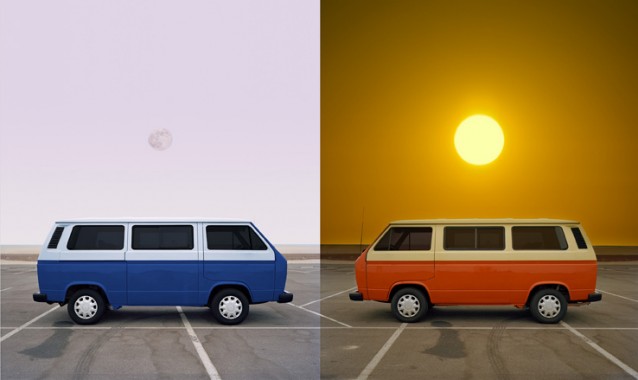
Amir Zaki, VW Vanagon Dawn Dusk, Dusk Dawn,, 2009
Three years ago Amir Zaki moved from Los Angles to Orange County, California, prompting a noted shift in his work. Earlier projects captured the pools and mansions common to the Southern California landscape, documenting both the luxury and the cliché embedded in that region’s distinct architecture. Zaki brought a cool eye to these subjects, spying curvy swimming pools from above, and depicting retro-chic living rooms empty of inhabitants. Domestic scenes were rendered as near abstractions, both highlighting their subject’s power over our imagination, and seemingly trying to capture common scenes with an objective approach.
Zaki’s new work explores structures common to his new locale: lifeguard towers and the Volkswagen Vanagon. The beach-side architectural structures seem to float in the sky, as all access to the towers has been digitally erased. Colors in both the skies and the small buildings themselves have been intensified, adding to sense of the fantastic. Several structures read like military outlooks, all streamlined angularity, while others would not seem out of place at nearby Disneyland. The image of the Vanagon presents this beach mobile as both an emblem of 1960s hippiedom, as well as a smooth-edged visual sculpture. On a biographical note, the two vans represent the vehicle Zaki owned as a younger man, and the replacement he sought out more than a decade later. The two mirrored images look at each other nose to nose, perhaps a portrait of youth staring age in the eye.
Amir Zaki, Relics
Reception: 7 January 2010, 6pm
7 January 2010 — 20 February 2010
James Harris Gallery
312 Second Avenue South
Seattle, WA
Amir Zaki, James Harris Gallery







